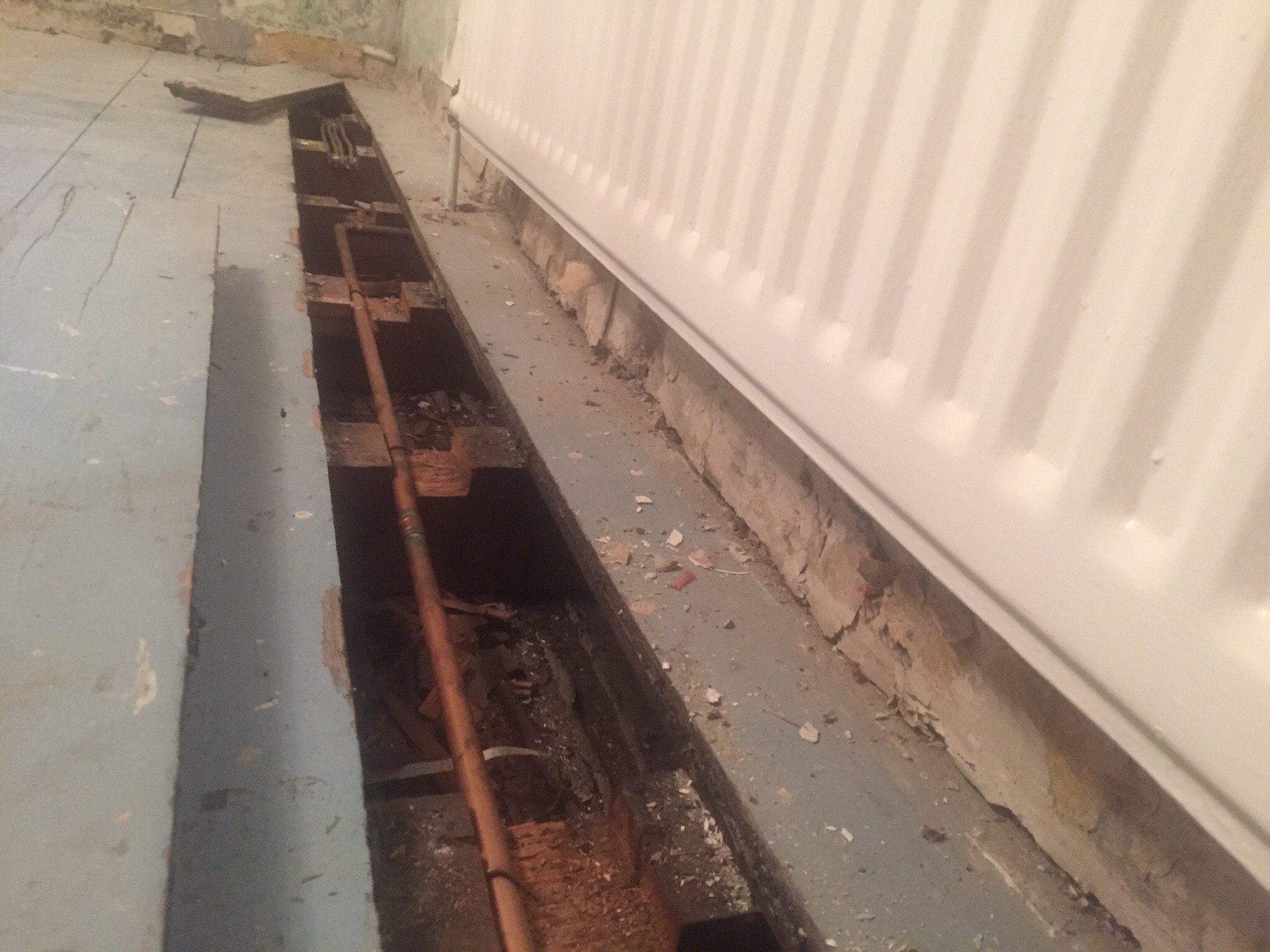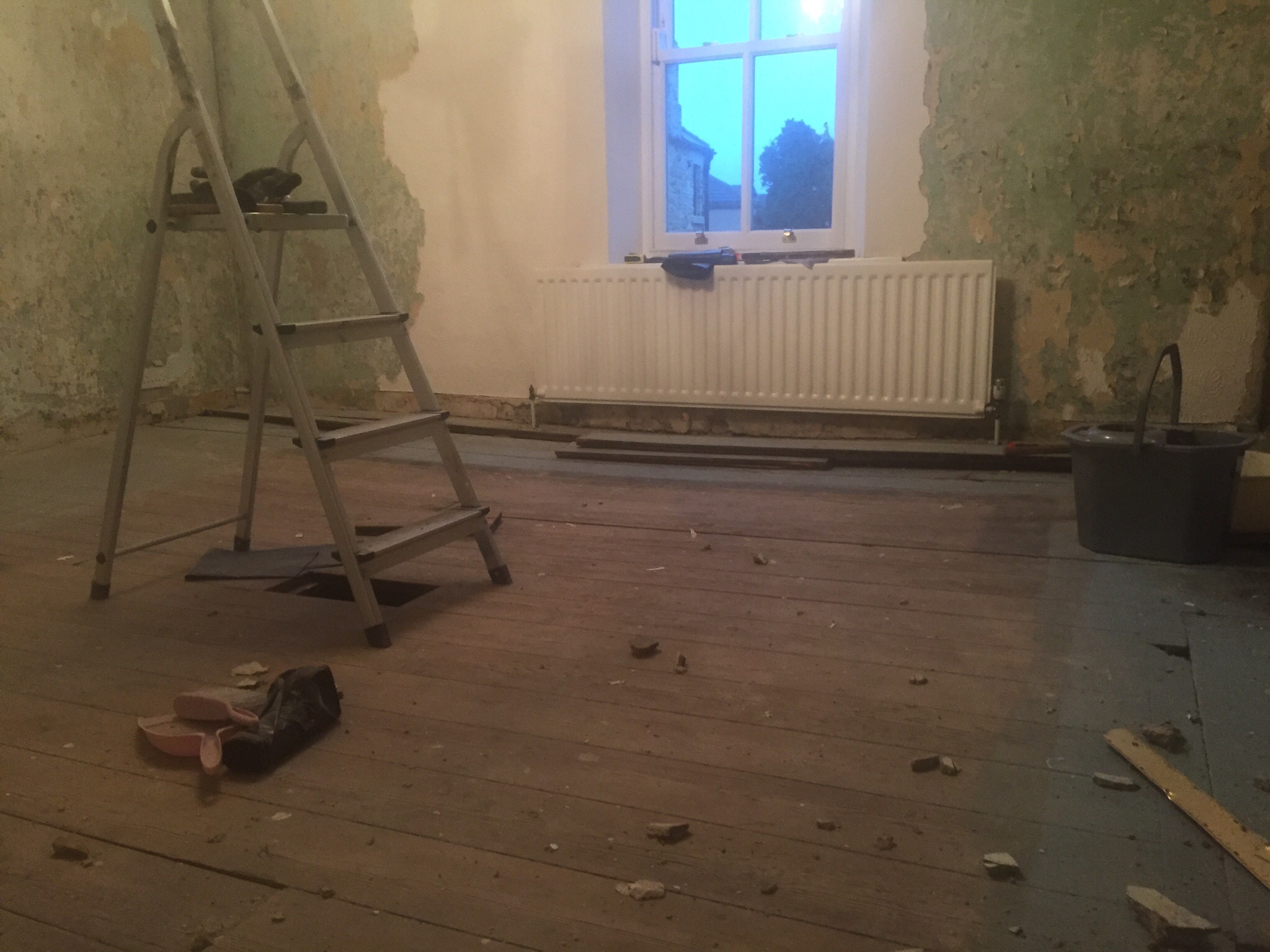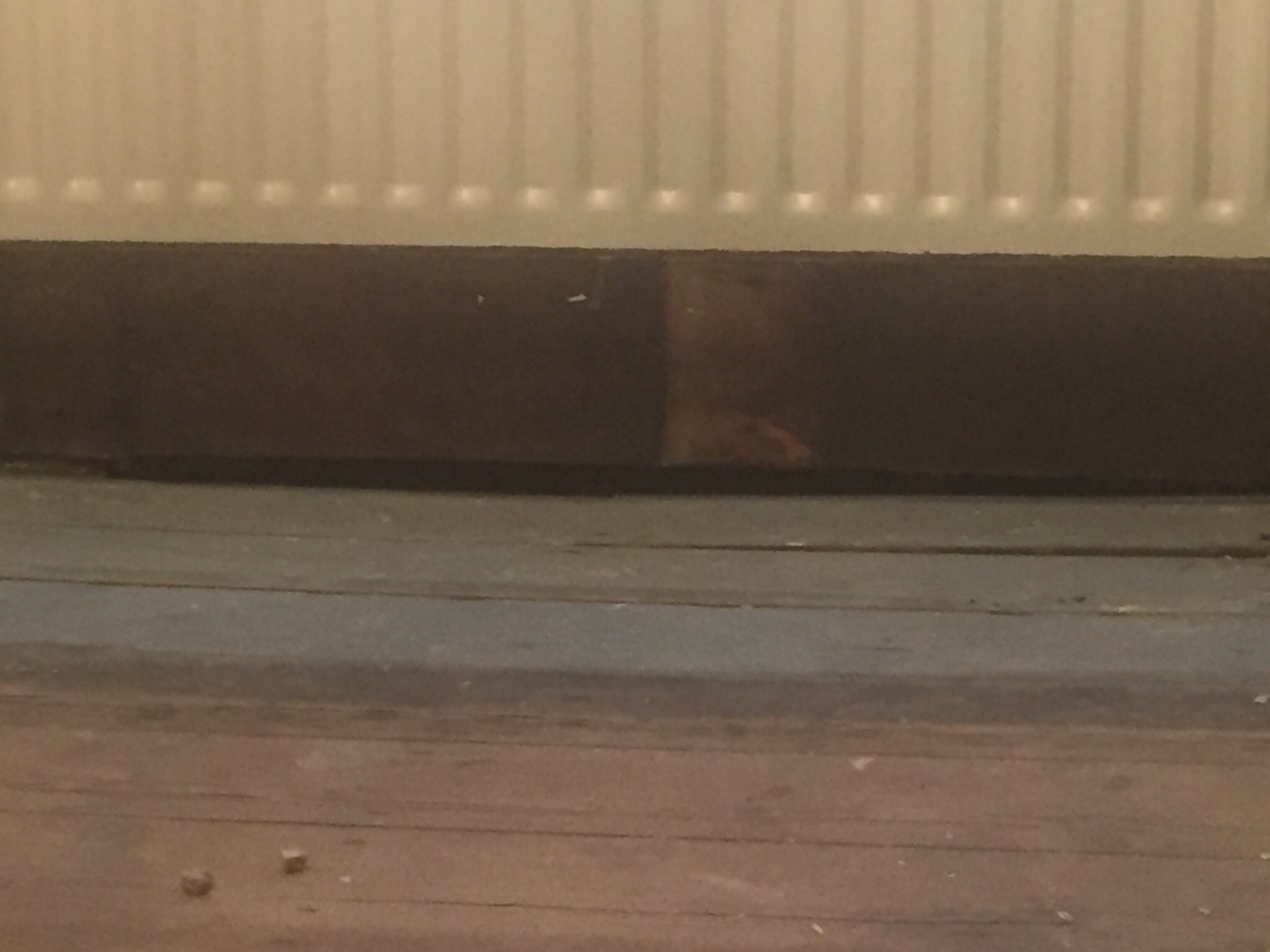- Joined
- 10 Jun 2016
- Messages
- 14
- Reaction score
- 0
- Country

Hi, we recently purchased a 1800s stone built house. The walls are approx 18 inches thick rubble filled stone. In the main bedroom we have lifted the carpet with the intention of restoring the wooden floorboards - however, the floorboards are in a very poor state and have been damaged by various installations and changes of the centuries - most of the t&g is broken and the edges of 50% or more of the boards have been damaged where they have been lifted. We are now planning to replace the floorboards, however we have a bigger issue to deal with first...
The floor joists in the room are well undersize - they are approximately 3x6 over a 4.3m span at 400mm centres with no central beam and only a small number of noggins - this leaves the room like a trampoline. At some point in the past someone has attached new 2x1 beams and packing to the underside and created a level ceiling in the lounge underneath, but upstairs the floor is significantly bowed - at least a 4 inch drop in the middle of the front wall compared to the edges. I've lifted the floorboards upstairs and the joists appear to be in quite good condition - there is no sign of compression or rot at the ends so either the building has settled and the floor has just sunk or there is something else going on I can't see. The joists are sat in tight wall pockets.
At the moment I am considering either taking everything down, replacing the joists with C16 treated 45x220mm and enlarging the existing pockets, adding 2 rows of noggins and fitting a new ceiling and floor directly to the new joists. A joiner has quoted us £3000 for this, looking at the suppliers I believe I can get the materials for about £1200 (this includes replastering the entire room and the bedroom and lounge ceilings which are to be replaced and the new flooring.)
Does anyone have any less 'destructive' methods for strengthening the floor? I have considered adding additional joists inbetween the current ones to level the floor and take the weight - this would mean I could keep the downstairs ceiling in place but I would either have to use masonry hangers to support the new joists or cut new wall pockets. I have also considered sistering but don't want to have to open up the current wall pockets any more than necessary.
Does anyone else have any ideas why the floor has sunk in the middle? The back (internal) wall of the room seems level, it is just the front wall of the property where the floor seems to drop so dramatically, and there is no sign of collapse in the timber or the pocket, and the wall seems stable below with no sign of cracking or failing to indicate something more structural going on?
Thanks for your advice.
The floor joists in the room are well undersize - they are approximately 3x6 over a 4.3m span at 400mm centres with no central beam and only a small number of noggins - this leaves the room like a trampoline. At some point in the past someone has attached new 2x1 beams and packing to the underside and created a level ceiling in the lounge underneath, but upstairs the floor is significantly bowed - at least a 4 inch drop in the middle of the front wall compared to the edges. I've lifted the floorboards upstairs and the joists appear to be in quite good condition - there is no sign of compression or rot at the ends so either the building has settled and the floor has just sunk or there is something else going on I can't see. The joists are sat in tight wall pockets.
At the moment I am considering either taking everything down, replacing the joists with C16 treated 45x220mm and enlarging the existing pockets, adding 2 rows of noggins and fitting a new ceiling and floor directly to the new joists. A joiner has quoted us £3000 for this, looking at the suppliers I believe I can get the materials for about £1200 (this includes replastering the entire room and the bedroom and lounge ceilings which are to be replaced and the new flooring.)
Does anyone have any less 'destructive' methods for strengthening the floor? I have considered adding additional joists inbetween the current ones to level the floor and take the weight - this would mean I could keep the downstairs ceiling in place but I would either have to use masonry hangers to support the new joists or cut new wall pockets. I have also considered sistering but don't want to have to open up the current wall pockets any more than necessary.
Does anyone else have any ideas why the floor has sunk in the middle? The back (internal) wall of the room seems level, it is just the front wall of the property where the floor seems to drop so dramatically, and there is no sign of collapse in the timber or the pocket, and the wall seems stable below with no sign of cracking or failing to indicate something more structural going on?
Thanks for your advice.
Last edited:



